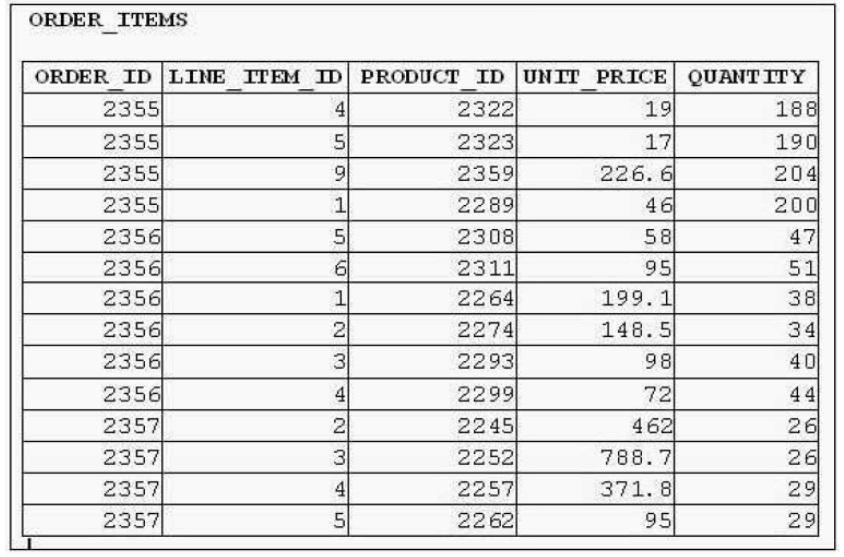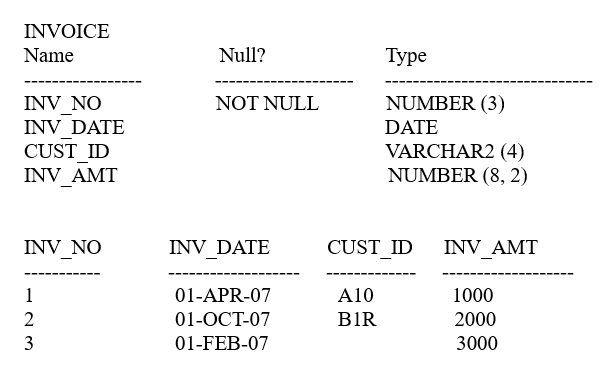Question: 1
Examine the structure of the ORDERS table:

You want to find the total value of all the orders for each year and issue this command:
SQL> SELECT TO_CHAR(order_date,'rr'), SUM(order_total) FROM orders
GROUP BY TO_CHAR(order_date, 'yyyy');
Which statement is true regarding the result? (Choose the best answer.)
Question: 2
View the Exhibit and examine the structure of the ORDER_ITEMS table.

You must select the ORDER_ID of the order that has the highest total value among all the orders in the ORDER_ITEMS table.
Which query would produce the desired result?
Question: 3
View the Exhibit and examine the structure of the EMP table which is not partitioned and not an index-organized table. (Choose two.)

Evaluate this SQL statement:
ALTER TABLE emp
DROP COLUMN first_name;
Which two statements are true?
Question: 4
View the exhibit and examine the structure and data in the INVOICE table.

Which two SQL statements would execute successfully? (Choose two.)
Question: 5
Which two statements best describe the benefits of using the WITH clause? (Choose two.)